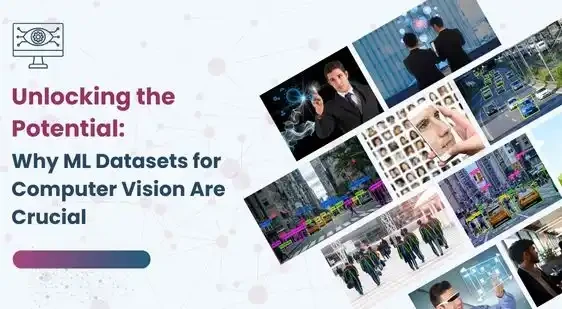In the domain of artificial intelligence (AI), datasets for machine learning (ML) play a crucial role in training. Computer vision, an essential part of AI focuses on entitle machines to appreciate and interpret visual data. Depends greatly on varied and reliable datasets to enhance its attention and efficiency. This article discusses the significance of ML datasets in the context of computer vision. Illustrating how they are essential for the capabilities of AI technologies to perceive. Analyze, and engage with the surrounding environment in novel and profound ways.
The Foundation of Computer Vision
The journey towards attain these capabilities begins with ML datasets. These datasets, which are collections of defined images or videos, provide the raw material needed for training computer vision models. The quality, diversity, and size of these datasets directly influence the performance of AI systems in real-world applications, from free vehicles navigating roads to automated medical diagnosis tools.
- High-Quality Data: Essential for training accurate and effective computer vision models.
- Annotated Datasets: Provide the necessary context for models to learn and make precise predictions.
- Training Efficiency: Structured data reduces training time and computational resources.
- Better Generalization: Models can perform well on unseen data, critical for real-world applications.
- Continuous Improvement: Annotated data helps in refining and improving model performance over time.
Enhancing Model Accuracy
One of the primary reasons ML datasets are crucial for computer vision is their role in enhancing model accuracy. A dataset that accurately represents the variety of the real world — encompassing different lighting conditions, angles, backgrounds, and object variations — trains models to be more robust and reliable.
Overcoming Bias
By ensuring datasets are inclusive and representative of the global population, developers can create computer vision models that are fair and equitable. This requires a deliberate effort to include a wide range of ethnicities, genders, ages, and other variables in the training data.
Facilitating Innovation
This specialization enables the creation of cutting-edge applications that push the boundaries of what computer vision can achieve.
Challenges and Solutions
One major hurdle is the time and resources required to collect and annotate datasets. Solutions to this challenge include leveraging crowdsourcing platforms, employing automated annotation tools, and fostering community-driven dataset-creation efforts. Adhering to data protection regulations and ethical standards in the collection and utilization of datasets is imperative to uphold the trustworthiness and credibility of computer vision applications.
The Future of ML Datasets in Computer Vision
It is vital to ensure that are gathered and employed in accordance with data protection laws and ethical guidelines to uphold the trustworthiness and integrity of computer vision applications.
Conclusion
They are the bedrock upon which the capabilities of computer vision systems are built and improved. High-quality, annotated datasets are the foundation upon which accurate, efficient, and generalizable computer vision models are built. Embrace the power of well-annotated data to propel your computer vision projects to new heights and stay ahead in the competitive AI landscape.







